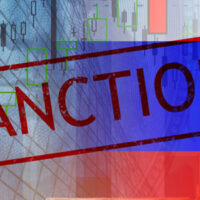
This article is the third part of a three-part series on the European Anti-Human Trafficking Legal and Policy Framework.
This article focuses on the creation of the ‘EU Strategy towards the Eradication of Trafficking in Human Beings 2012-2016’ as a result of Directive 2011/36/EU. In addition, it is an overview of the extensive legal and policy instruments as well as the strategic documents and resources that address human trafficking at the European level.
The EU’s Strategy Toward the Eradication of Human Trafficking
The ‘EU Strategy towards the Eradication of Trafficking in Human Beings 2012-2016’1 is a policy instrument that focuses on four issues: prevention, protection, prosecution and partnerships. It also includes ways to raise awareness of emerging concerns related to human trafficking based on Directive 2011/36/EU. In addition, this policy instrument states:
'With this Strategy, the European Commission seeks to focus on concrete measures that will support the transposition and implementation of Directive 2011/36/EU, bring added value and complement the work done by governments, international organizations and civil society in the EU and third countries.
The main responsibility for addressing trafficking in human beings lies with the Member States. The purpose of this Communication is to show how the European Commission intends to support the Member States in doing this.'2
The strategy identifies five priorities that EU member states should focus on to address human trafficking:
A. 'Identifying, protecting and assisting victims of trafficking
B. Stepping up the prevention of trafficking in human beings
C. Increased prosecution of traffickers
D. Enhanced coordination and cooperation among key actors and policy coherence
E. Increased knowledge of and effective response to emerging concerns related to all forms of trafficking in human beings'3
The European Commission submitted a report to assess how the strategy has been implemented from 2012 to 2014 in its ‘Mid-term report on the implementation of the EU strategy towards the eradication of trafficking in human beings.’4 The report presents the progress made based on the first four priorities of the strategy while the fifth was covered under each priority.
The report pointed that this was the first time the European Commission collected statistical data on the trafficking of human beings at European level. The statistical data comprises the total number of victims as well as suspected, prosecuted and convicted traffickers per gender, age, citizenship, form of exploitation, and type of assistance and protection received for victims. In 2020, the European Commission’s fifth report5 presenting the data collection on trafficking in human beings revealed that between 2017 and 2018, the number of registered victims of human trafficking in the 28 member states accounted for 26,268. This was an increase of 5,736 registered victims from the numbers reported between 2015 and 2016.
The report also pointed out the strong legal and political commitment of the European member states in addressing the trafficking of human beings as well as the development of a comprehensive legal and policy framework embodied by the Directive 2011/36/EU. The latter is the first act at the European level to address trafficking in human beings in a comprehensive and integrated way.
Transnational Referral Mechanism Model
The ‘EU Strategy towards the Eradication of Trafficking in Human Beings 2012-2016’ states under priority A, action 1 that member states should establish formal national referral mechanisms to protect and provide support for victims. The European Commission launched a European Transnational Referral Mechanism (TRM) with the International Organization for Migration as a result of the EU-funded Transnational Action (TACT) project.6 The TRM model is an online transnational referral tool that:
'…links up experts and professionals from different countries involved in the identification, referral, assistance, return, and monitoring of assistance to victims of trafficking. It defines the roles of each stakeholder participating in national referral mechanisms (NRM) and serves as a platform to inform and connect counter-trafficking practitioners in countries of origin and countries of destination.'7
EU Civil Society Platform and ePlatform Against Human Trafficking
In priority D, action 3 of the ‘EU Strategy towards the Eradication of Trafficking in Human Beings 2012-2016’, the strategy established the ‘EU Civil Society Platform and ePlatform Against Trafficking in Human Beings’8 as Directive 2011/36/EU states that member states should encourage and work closely with civil society organisations.9
The platform comprises over 100 participants who take part in the biannual meetings with the national rapporteurs or equivalent mechanisms (NREMs) chaired by the EU Anti-Trafficking Coordinator (EU ATC) and aims at facilitating cooperation between national authorities and civil society in compliance with the directive.
The ePlatform is a space that connects organizations engaged in the fight against human trafficking to enable them to discuss and share information as well as exchange best practices with the aim of ensuring a regular and sustainable dialogue.
Studies Conducted by the European Commission
As part of the strategy, the European Commission conducted the ‘Study on the Gender Dimension of Trafficking in Human Beings’,10 a report on the prevention of human trafficking and the protection of its victims by identifying and understanding the gender perspective as required by the ‘EU Strategy Towards the Eradication of Trafficking in Human Beings 2012-2016’ outlined in priority E, action 2. This study states:
'The Commission will develop knowledge on the gender dimensions of human trafficking, including the gender specificities of the way men and women are recruited and exploited, the gender consequences of the various forms of trafficking and potential differences in the vulnerability of men and women to victimisation and its impact on them.'11
On the basis of statistical data from Eurostat, Europol and the United Nations Office on Drugs and Crime, the study showed that sexual exploitation is the most reported form of victim exploitation and it has a strong gender dimension with 96% of victims being women and girls.
The European Commission also committed itself to conduct a ‘Study on Comprehensive Policy Review of Anti-Trafficking Projects’12 as stated in priority D, action 4 of the ‘EU Strategy towards the Eradication of Trafficking in Human Beings 2012–2016, to support future projects and establish coherent, cost-effective and strategic EU policy and funding initiatives.13
The review showed that funding was awarded to 221 projects located in 62 countries worldwide, including 26 European member states. Half of these funded projects were led by non-governmental organizations and the other half comprised state agencies, international organizations, universities and research organizations. These projects ran activities in over 100 countries worldwide and appeared to focus on nine different forms of exploitation and groups of victims. The highest proportion of funds was allocated to funded projects focusing on multiple forms of exploitation, followed by child trafficking and labour exploitation.
Reporting and Identifying Further Actions
The communication from the European Commission on ‘Reporting on the follow-up to the EU Strategy towards the Eradication of trafficking in human beings and identifying further concrete actions’14 is a policy instrument that focuses on priorities European member states should take on the basis of the strategy and the two reports. This communication identified three specific priorities to address human trafficking:
Disrupting the Business Model and Untangling the Trafficking Chain
This report points out the importance of financial investigation in addressing human trafficking,
'Following the money throughout the trafficking chain is crucial to turning trafficking in human beings into a 'high-risk, low-return' crime. This can be done by intensifying investigations and prosecutions and facilitating proactive financial and intelligence-led investigations, asset recovery, freezing and confiscation of profits.'15
The report also highlights that profits on both lawful and illicit markets as well as the demand for services and goods provided by victims of human trafficking remains high while a culture of impunity for traffickers and ‘consumers’ prevails.
Provide Better Access to and Realize the Rights For Victims
Based on this priority, the European Commission took action that resulted in the following three key reports:
- Gender-Specific Measures in Anti-trafficking Actions’,16 a report by the European Institute for Gender Equality: This report aims to provide guidance to the member states on gender-specific measures with the aim of better identifying, helping and supporting victims of human trafficking.
- ‘Practical Guide to Enhance Transnational Cooperation: EU Child Victims of Trafficking or in Need of Protection',17 a guide by the European Union Agency for Fundamental Rights (FRA): This guide aims to provide member states with comprehensive, practical suggestions on how to address the issue of child victims of trafficking or in need of protection. It also provides a brief overview of the relevant international and European legal frameworks in relation to criminal justice, victims’ rights and cross-border cooperation amongst the member states.
- ‘Working together to address trafficking in human beings, Key concepts in a nutshell’,18 a consolidated document based on concepts published by the European Commission, EU agencies and international organisations.
Intensify a Coordinated and Consolidated Response, Both Within and Outside the EU
In this priority, the European Commission committed itself to 'promote a renewed commitment by EU Justice and Home Affairs agencies to working together against trafficking with the involvement of further relevant agencies',19 which resulted in the ‘Joint Statement of commitment to working together against trafficking in human beings’20 signed by various European agencies. The undersigned of the Joint Statement renewed their commitment to working together to address human trafficking, assist the member states in implementing the EU’s Anti-Trafficking Directive, and build on the synergies on the basis of the previous Joint Statement in 2011 and the work carried out under the ‘EU Strategy towards the Eradication of Trafficking in Human Beings 2012-2016’.
The FRA published a guide titled ‘Children deprived of parental care found in an EU Member State other than their own’21 in cooperation with the EU based on the ‘Reporting on the follow-up to the EU Strategy towards the Eradication of trafficking in human beings and identifying further concrete actions’ and the ‘Joint statement of commitment to working together against trafficking in human beings.’ This guide aims at strengthening the response of all relevant actors for child protection and various professionals who may come in direct contact with child victims of trafficking and children at risk.
In addition, the ‘Reporting on the follow-up to the EU Strategy towards the Eradication of trafficking in human beings and identifying further concrete actions’ identified the following two cross-cutting priorities to address human trafficking.
Cross-Cutting Actions for a Sound Knowledge Base
Based on this cross-cutting priority, the European Commission launched a European-wide awareness-raising campaign on human trafficking22 with the European Crime Prevention Network aimed at warning and informing individuals on whether they are or could become a human trafficking victim, where they can find assistance, protection and information, as well as their European-wide rights.
Cross-Cutting Actions to Support Anti-Trafficking Priorities in EU and Non-EU Countries
The European Commission reiterated its commitment to 'support anti-trafficking objectives and priorities, including projects taking particular account of the gender dimension of the phenomenon, high-risk groups as well as high-risk sectors through various EU funding programmes.'23
A comprehensive overview of all EU projects and funding24 is available on the European Commission’s website Together Against Trafficking in Human Beings.25
As a result of ‘Reporting on the follow-up to the EU Strategy towards the Eradication of trafficking in human beings and identifying further concrete actions’, the European Parliament issued two resolutions in 2016 based on the targeted priorities presented by the EU ATC to the European Parliament. These resolutions do not intend to have legal effects but rather express the European Parliament’s political position on human trafficking in relation to the EU by setting up political commitments and positions.
- ‘European Parliament Resolution of 12 May 2016 on Implementation of the Directive 2011/36/EU of 5 April 2011 on Preventing and Combating Trafficking in Human Beings and Protecting its Victims From a Gender Perspective (2015/2118[INI])’26
- ‘European Parliament Resolution of 5 July 2016 on the Fight Against Trafficking in Human Beings in the EU’s External Relations (2015/2340[INI])’27
Additional Instruments Addressing Human Trafficking in Line With the European Legal and Policy Framework
- ‘Study on High-risk Groups for Trafficking in Human Beings’28
- ‘Study on Case-law Relating to Trafficking in Human Beings for Labour Exploitation’29
- ‘Study on Prevention Initiatives on Trafficking in Human Beings’30
- ‘Guidelines for the Identification of Victims of Trafficking in Human Beings’31
- ‘The EU Rights of Victims of Trafficking in Human Beings’32
- ‘Identification of Victims of Trafficking in Human Beings in International Protection and Forced Return Procedures’33
- ‘Guardianship systems for children deprived of parental care in the European Union - With a particular focus on their role in responding to child trafficking’34
Conclusion
In the EU, human trafficking is addressed through an extensive legal and policy framework, which adopts a human rights-based, victim-centred, gender-specific and child-sensitive approach anchored in the EU Anti-Trafficking Directive.
It is the fundamental legislative act that addresses human trafficking in the EU and legally binds all its member states. These are required to establish NREMs responsible for monitoring the implementation of anti-human trafficking policy at the national level as per the EU Anti-Trafficking Directive. Furthermore, the member states and their NREMs are required to report to the EU ATC, who is responsible for improving coordination and coherence among all relevant actors including the member states themselves, various European agencies and international organizations, and for improving and implementing policies to address human trafficking in the EU.
It is complemented by the ‘EU Strategy towards the Eradication of Trafficking in Human Beings 2012-2016’ and the Communication ‘Reporting on the follow-up to the EU Strategy towards the Eradication of trafficking in human beings and identifying further concrete actions’. The former focuses on prevention, protection, prosecution and partnerships. It includes ways to raise awareness of emerging concerns related to human trafficking and identifies priorities that member states should focus on to address human trafficking. It also encourages member states to establish formal national referral mechanisms to protect and provide support for victims and to work closely with civil society organisations. In this regard, the European Commission launched the TRM, the EU Civil Society Platform and ePlatform Against Human Trafficking comprising over 100 participants. The latter identifies priorities and sets concrete actions to better prevent human trafficking based on the strategy and in the light of recent migratory, economic and transnational security challenges.
As a result, the EU has a solid, comprehensive and ambitious legal and policy framework to address human trafficking. It is embedded in an extensive number of policy instruments as well as strategic documents and resources that address human trafficking at the European level. This is a milestone given the complex transnational nature of human trafficking that can be addressed effectively if the European member states work together in a coordinated way. In this regard, they have demonstrated a strong legal and political commitment to addressing this phenomenon by developing a comprehensive legal and policy framework.
Jonathan Dupont, analyst, financial intelligence unit, Vilnius, Lithuania, jonathandupont@protonmail.com
- “The EU Strategy towards the Eradication of Trafficking in Human Beings 2012-2016,” European Commission, 19 June 2012, https://ec.europa.eu/anti-trafficking/sites/antitrafficking/files/the_eu_strategy_towards_the_eradication_of_trafficking_in_human_beings_2012-2016_1.pdf
- Ibid., 5.
- Ibid., 5.
- “Mid-term report on the implementation of the EU strategy towards the eradication of trafficking in human beings,” European Commission , 17 October 2014, https://ec.europa.eu/anti-trafficking/sites/antitrafficking/files/commission_staff_working_document_-_mid-term_report_on_the_implementation_of_the_eu_strategy_towards_the_eradication_of_trafficking_in_human_beings.pdf
- “Data collection on trafficking in human beings in the EU,” European Commission , 2020, https://ec.europa.eu/anti-trafficking/sites/antitrafficking/files/study_on_data_collection_on_trafficking_in_human_beings_in_the_eu.pdf
- Transnational referral mechanism Model (TACT), http://www.iomfrance.org/tact/index.html
- “IOM, EU Aid Victims of Human Trafficking through New Online Platform,” International Organization for Migration , 24 April 2017, https://www.iom.int/news/iom-eu-aid-victims-human-trafficking-through-new-online-platform.
- “EU Civil Society Platform and ePlatform against trafficking in human beings,” European Commission , https://ec.europa.eu/anti-trafficking/media-outreach-els/eu-civil-society-e-platform_en
- “Directive 2011/36/EU of the European Parliament and of the Council of 5 April 2011 on preventing and combating trafficking in human beings and protecting its victims, and replacing Council Framework Decision 2002/629/JHA,” EUR-Lex, 5 April 2011, https://eur-lex.europa.eu/LexUriServ/LexUriServ.do?uri=OJ:L:2011:101:0001:0011:EN:PDF
- “Study on the gender dimension of trafficking in human beings,” European Commission, 2016, https://ec.europa.eu/anti-trafficking/sites/antitrafficking/files/study_on_the_gender_dimension_of_trafficking_in_human_beings._final_report.pdf .
- “The EU Strategy towards the Eradication of Trafficking in Human Beings 2012-2016,”European Commission, https://ec.europa.eu/anti-trafficking/sites/antitrafficking/files/the_eu_strategy_towards_the_eradication_of_trafficking_in_human_beings_2012-2016_1.pdf, 14.
- “Comprehensive Policy Review of Anti-Trafficking Projects,” European Commission, 23 September 2016, https://ec.europa.eu/anti-trafficking/sites/antitrafficking/files/study_on_comprehensive_policy_review.pdf .
- “The EU Strategy towards the Eradication of Trafficking in Human Beings 2012-2016,”p. 12, https://ec.europa.eu/anti-trafficking/sites/antitrafficking/files/the_eu_strategy_towards_the_eradication_of_trafficking_in_human_beings_2012-2016_1.pdf
- “Reporting on the follow-up to the EU Strategy towards the Eradication of trafficking in human beings and identifying further concrete actions,” European Commission, 4 April 2017, https://ec.europa.eu/anti-trafficking/sites/antitrafficking/files/20171204_communication_reporting_on_follow-up_to_the_eu_strategy_towards_the_eradication_of_trafficking_in_human_beings.pdf
- Ibid, 3.
- “Gender-specific measures in anti-trafficking actions,” European Institute for Gender Equality, 17 October 2018, https://eige.europa.eu/publications/gender-specific-measures-anti-trafficking-actions-report
- “Practical guide to enhance transnational cooperation: EU child victims of trafficking or in need of protection,” European Union Agency for Fundamental Rights , https://fra.europa.eu/en/project/2018/practical-guide-enhance-transnational-cooperation-eu-child-victims-trafficking-or-need
- “Working together to address trafficking in human beings key concepts in a nutshell,” European Commission, https://ec.europa.eu/anti-trafficking/sites/antitrafficking/files/key_concepts_in_a_nutshell.pdf
- “Reporting on the follow-up to the EU Strategy towards the Eradication of trafficking in human beings and identifying further concrete actions,” European Commission , 12 April 2017, https://ec.europa.eu/anti-trafficking/sites/antitrafficking/files/20171204_communication_reporting_on_follow-up_to_the_eu_strategy_towards_the_eradication_of_trafficking_in_human_beings.pdf , 7.
- “Joint Statement of commitment to working together against trafficking in human beings,” European Commission, 2018, https://ec.europa.eu/anti-trafficking/sites/antitrafficking/files/eu_agencies_joint_statement_of_commitment_to_working_together_to_address_thb.pdf
- “Children deprived of parental care found in an EU Member State other than their own,” European Union Agency for Fundamental Rights, 2019, https://fra.europa.eu/en/publication/2019/children-deprived-parental-care-found-eu-member-state-other-their-own
- “Are you a victim of human trafficking? You have rights!,” European Crime Prevention Network, 17 October 2019, https://eucpn.org/preventhumantrafficking
- “Reporting on the follow-up to the EU Strategy towards the Eradication of trafficking in human beings and identifying further concrete actions,” European Commission , 12 April 2017, https://ec.europa.eu/anti-trafficking/sites/antitrafficking/files/20171204_communication_reporting_on_follow-up_to_the_eu_strategy_towards_the_eradication_of_trafficking_in_human_beings.pdf, 8.
- “EU Projects and Funding,” European Commission , 10 October 2010, https://ec.europa.eu/anti-trafficking/eu-projects/eu-projects-and-funding_en
- “Together Against Trafficking in Human Beings,” European Commission, https://ec.europa.eu/anti-trafficking/node/4598_en
- “European Parliament resolution of 12 May 2016 on implementation of the Directive 2011/36/EU of 5 April 2011 on preventing and combating trafficking in human beings and protecting its victims from a gender perspective (2015/2118[INI]),” European Parliament, 12 May 2016, https://www.europarl.europa.eu/doceo/document/TA-8-2016-0227_EN.pdf.
- “European Parliament resolution of 5 July 2016 on the fight against trafficking in human beings in the EU’s external relations (2015/2340(INI))”, European Parliament , July 5, 2016: https://www.europarl.europa.eu/doceo/document/TA-8-2016-0300_EN.pdf.
- “Study on high-risk groups for trafficking in human beings,” European Commission, 2015: https://ec.europa.eu/anti-trafficking/sites/antitrafficking/files/study_on_children_as_high_risk_groups_of_trafficking_in_human_beings_0.pdf .
- “Study on Case-law Relating to Trafficking in Human Beings for Labor Exploitation,” European Commission , 2015: https://ec.europa.eu/anti-trafficking/sites/antitrafficking/files/study_on_case-law_on_trafficking_for_the_purpose_of_labour_exploitation_2.pdf.
- “Study on prevention initiatives on trafficking in human beings,” European Commission, 2015: https://ec.europa.eu/anti-trafficking/sites/antitrafficking/files/study_on_prevention_initiatives_on_trafficking_in_human_beings_0.pdf.
- “Guidelines for the identification of victims of trafficking in human beings,” European Commission, 2013, https://ec.europa.eu/anti-trafficking/sites/antitrafficking/files/guidelines_on_identification_of_victims_1.pdf.
- “The EU rights of victims of trafficking in human beings,” European Commission, 2013, https://ec.europa.eu/anti-trafficking/sites/antitrafficking/files/eu_rights_of_victims_of_trafficking_en_1.pdf
- “EMN Study on Identification of victims of trafficking in human beings in international protection and forced return procedures,” European Commission, 2014, https://ec.europa.eu/anti-trafficking/publications/emn-study-identification-victims-trafficking-human-beings-international-protection-and_en
- “Guardianship systems for children deprived of parental care in the European Union - With a particular focus on their role in responding to child trafficking,” European Union Agency for Fundamental Rights, 2015, https://fra.europa.eu/en/publication/2015/guardianship-systems-children-deprived-parental-care-european-union










